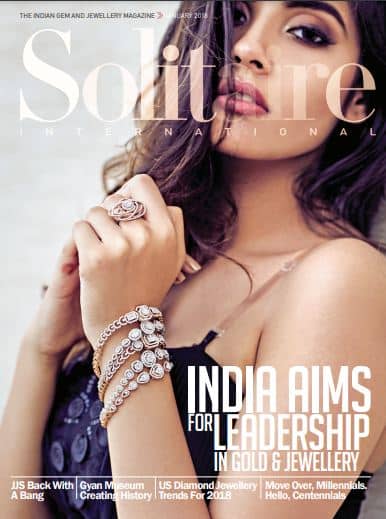‘Gold Jewellery Catalogue’ PDF Quick download link is given at the bottom of this article. You can see the PDF demo, size of the PDF, page numbers, and direct download Free PDF of ‘Gold Jewellery Design’ using the download button.
South Indian Gold Jewellry Designs Catalogue PDF Free Download

Gold Jewellery Catalogue
The love of beauty and adornment is equally inherent in both man and God in nature. For an agnostic, it exists in the scheme of the entire universe.
Metaphysical concepts of beauty have historically been closely intertwined with material and formal concepts, and beauty symbols have equally deep roots in the beauty of reality and matter.
In the case of the body, the charm of the brightness and color added to the element of the arrangement is a characteristic of beauty.
Xenophon, the Stoics and Cicero all support this concept.
Adornment of form becomes necessary for the beautification of the soul and the love of ornaments becomes inherent in the entire human race, rather in the entire living universe.
The subjectivity of beauty is not merely a fact, but a law. It is the predicate of an aesthetic judgement.
Beauty is not only an absolute concept, as the Greeks claim, but also a relative concept, as Hindi art and philosophy prove it.
It should be manifest and clear to the senses and the intellect. Jewelry naturally becomes an aid to beauty.
Nature adorns its creations with ornaments to execute its laws.
However, in the scheme of it, the male itself needs to be attractive.
In birds and flowers showing pair fertilization, the male is always more attractive. Primitive society shows closeness to nature in humans.
Among the Chacos, Red-Indians, it is the male who has decorated himself more with ornaments, paint and feathers.
It is only among those who have shown some degree of advanced traces of civilization, living and thinking, that the order is reversed.
The woman, under the stress of social circumstances, has tried to overcome her modesty by letting her ornaments and manners speak for her and attract the man.
First copper and iron, ivory and agate stone, later gold and silver and gems became the medium of adornment.
Religion and superstition played an important role in attributing additional properties to these substances, and these metals and gems became symbols of archaic beliefs and magical efficacy.
The brilliant wish-fulfilling gem became the means to attain long life and immortality.
Besides the primitive art of filigree, the highly developed art of enamelling also reached a high degree of perfection in this country.
Its traces are also found in Takshashila and this art reached its zenith during the Mughal period.
The minaret of that period was equal to any minaret in the world and was excelled only by the minaret of Shiraz in Persia.
Some cities in India became particularly famous for their Meenakari; Jaipur was the best among these.
It was one of the Rajput states which continued to be patronized even after the decline of the Mughals and maintained its high standard for a longer period of time than other places.
Now standards have declined and some pieces made by the ancestors of current workers are impossible to reproduce.
A very high stage of finish and design was reached during the epic period of Ramayana and Mahabharata.
Jewelery is often mentioned in these works.
Arjuna, who came in disguise in the court of King Virat, was wearing earrings and women’s necklaces and bracelets.
One of the gods presented him with a gold chain and a crown.
Krishna took off his necklace and gave it to a Brahmin who praised him.
At the time of his marriage, Rama wore a pearl crown, earrings, a garland of flowers and pearls around his neck, and a pearl ornament on his forehead.
One of the earliest examples of ancient Indian jewelery is a small relic casket found in a Buddhist temple in the Kabul Valley near Jalabad.
This ballas is of gold studded with rubies and includes burnished pearls, corals, sapphire beads, agates and crystals besides many other gold ornaments.
The ancient art of mixing gold into fine particles never disappeared from this country.
Jewelery was worn not only for decoration and value but also for some religious and superstitious reasons.
The code of Manu prescribes the wearing of ornaments on certain occasions. The use of ornaments is, because of custom, almost a necessity even for the poorest of the poor.
The girl must be given ornaments at the time of her marriage and if there are too many ornaments beyond the means of the parents, one ornament must be given.
This piece varies from state to state and is put on at the time of a girl’s marriage, which is only removed when she becomes a widow or at the time of death.
It is interesting to know how some of those ornaments, which are considered essential for a married woman, have survived through the centuries.
The wedding necklace of Coorg is made of small black beads attached to very small links of gold chain.
A similar necklace has been discovered at Mohenjo-daro, while a necklace worn by a Rajputana woman while parting her hair has been found at Harappa.
It is not known whether these ornaments were used for the same purposes in those places.
| Author | Jamila Brij Bhushan |
| Language | English |
| Pages | 283 |
| PDF Size | 8.3 MB |
| Category | Business |
The Indian Gem & Jewellery Magazine Solitaire International
South Indian Gold Jewellry Designs Catalogue PDF Free Download
